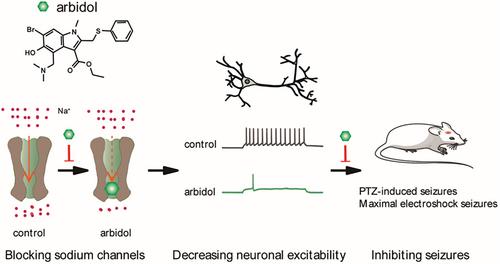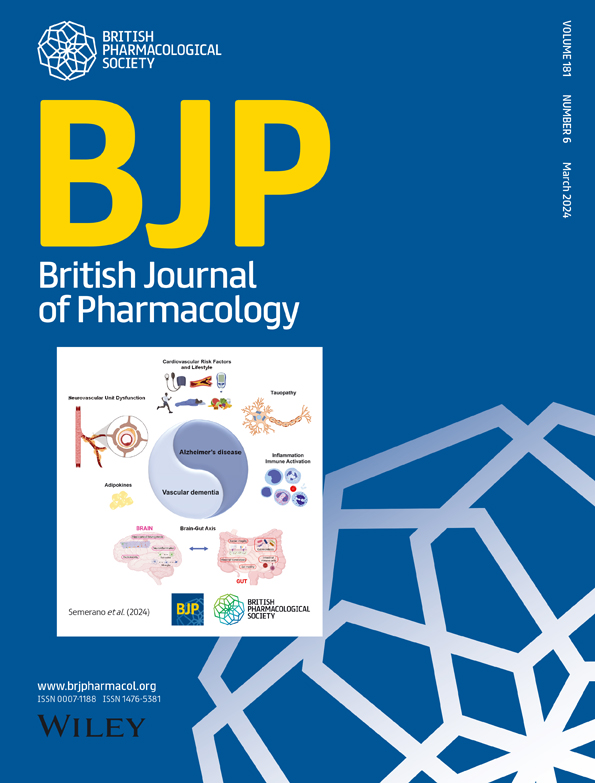Arbidol, an antiviral drug, identified as a sodium channel blocker with anticonvulsant activity
Abstract
Background and purpose
Sodium channel blockers (SCBs) have traditionally been utilized as anti-seizure medications by primarily targeting the inactivation process. In a drug discovery project aiming at finding potential anticonvulsants, we have identified arbidol, originally an antiviral drug, as a potent SCB. In order to evaluate its anticonvulsant potential, we have thoroughly examined its biophysical properties as well as its effects on animal seizure models.
Experimental approach
Patch clamp recording was used to investigate the electrophysiological properties of arbidol, as well as the binding and unbinding kinetics of arbidol, carbamazepine and lacosamide. Furthermore, we evaluated the anticonvulsant effects of arbidol using three different seizure models in male mice.
Key results
Arbidol effectively suppressed neuronal epileptiform activity by blocking sodium channels. Arbidol demonstrated a distinct mode of action by interacting with both the fast and slow inactivation of Nav1.2 channels compared with carbamazepine and lacosamide. A kinetic study suggested that the binding and unbinding rates might be associated with the specific characteristics of these three drugs. Arbidol targeted the classical binding site of local anaesthetics, effectively inhibited the gain-of-function effects of Nav1.2 epileptic mutations and exhibited varying degrees of anticonvulsant effects in the maximal electroshock model and subcutaneous pentylenetetrazol model but had no effect in the pilocarpine-induced status epilepticus model.
Conclusions and implications
Arbidol shows promising potential as an anticonvulsant agent, providing a unique mode of action that sets it apart from existing SCBs.


 求助内容:
求助内容: 应助结果提醒方式:
应助结果提醒方式:


